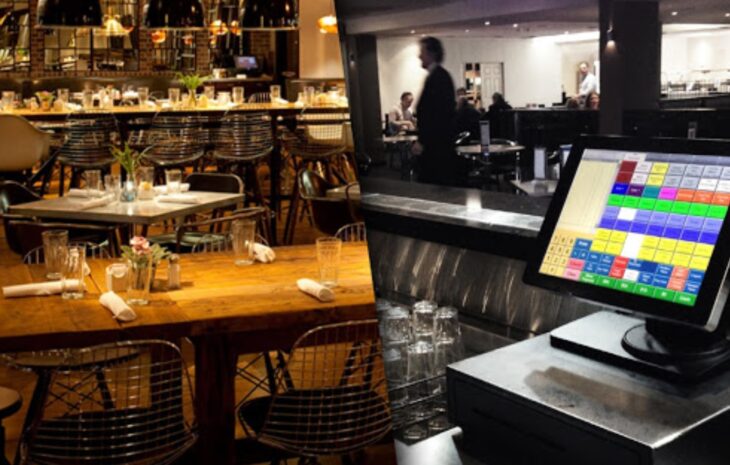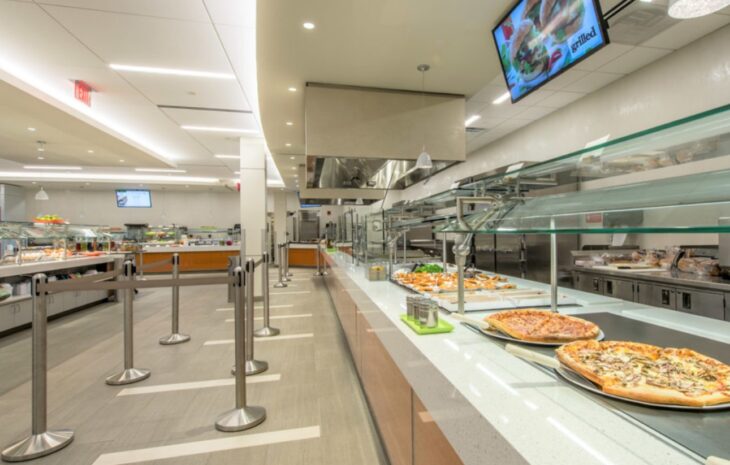A corporate cafeteria is where a company’s employees can have lunch without leaving their office building or going off-site for meals. The meals can either be paid for by the company or individual. Otherwise, the cafeteria can serve meals to other businesses and passers-by daily. The corporate cafeteria has received quite a bit of attention in today’s business world as it can increase employee efficiency and employee retention rates. But the question is whether you really know how a corporate cafeteria functions. For more information, click here.
Most corporate cafeterias do not offer a lot on their menu, but office cafeterias have more benefits. As an employer, you have to go the extra mile to provide your employees with what they will appreciate. Some companies run their cafeterias in-house but hiring a management company often makes the process of providing in-house dining cheaper and easier to manage. Corporates are places where time is money and good health is a priority for the utmost performance of individuals in the corporate.

Source: www.bttsws.com
Contents
What Corporate Cafeteria Management Entails?
Corporate cafeteria management handles everything connected to your cafeteria. It includes; setting up the cafeteria, preparing daily meals, ordering food, cleaning up, and planning menus. Let’s have a look at what the corporate cafeteria management works in detail.
1. Prepare Meals
A chef will check on the preparation of the meals in your cafeteria every day. This will mostly be lunch, but depending on your contract, they can also serve coffee, snacks, or breakfast, the reason why corporate cafeteria Management Company is useful. They prepare your meals, and employees enjoy freshly-made meals every day they visit the cafeteria.A chef is the one with whom you sit down and decide the essence of your cafeteria so it is not just the menu that a chef decides the overall essence that is decided by the chef plays a very important part when you conduct business. to take an example if you are a Chinese restaurant, that is because of the items in the menu decided by the chef who was hired. This also brings one of the toughest and the most vital aspects to this type of business, that is the team. The production team holds the key to smooth operations.

Source: Budget Bytes
2. Order Food
Corporate cafeterias have nationwide relationships with food distributors as they order for many facilities. They negotiate discounts on the food they order, saving businesses money. The better the food deal the management can create, the more profit can be made or the lower the food costs for employees will be.
3. Plan Menus
According to the food ordered, corporate cafeteria management plans menus of each cafeteria whether salmon patties one day or fried chicken the next. The menus vary within most corporate dining places based on health initiatives, costs, and the chefs that prepare the meals.The deciding menu on a daily basis proves to be a tedious and time-consuming task.

Source: Diet Doctor
4. Cleanup
After the lunch break, your cafeteria management cleans up the dishes and disposes of the remaining food. It’s one of the unmentioned aspects and hidden-costs associated with managing a corporate cafeteria.
5. Serve Food
After preparing food, your cafeteria staff serves the company’s employees in various ways. They can offer lunch boxes convenient to bring to a meeting or self-checkout that saves time and money. The cafeteria may even function with a wait staff that delivers meals to tables or simply be a buffet-style food service. This starts from how the food is packaged to how it is delivered to the customers or how it is catered to the consumer. This could involve/include a buffet meal or self-service or one of the versions that is gaining popularity right now which is the live kitchen.

Source: KTCHNrebel
How Corporate Cafeteria Management Makes Money
There are different ways to pay a corporate cafeteria management company, but typically they are paid through contract fees or regular management depending on your pricing. Apart from the subsidy, you also pay for everything the management needs. It also has its way of reducing overhead costs. The cost of meals goes to the corporate cafeteria management. Assuming how to pay the cafeteria, management is challenging as they have a different quote for the services, they offer your cafeteria. Depending on the organization being serviced there are two ways payments can be made or expected, prepaid and postpaid. In the former, a card can be provided to the users containing the information required for tallying relevant data whereas in the latter payment can be directly deducted from the salary of the employees. Various software systems can be opted for to maintain and tally records for accurate payments either at the end of the beginning of the service.
The trouble with Corporate Cafeterias
Probably, you are aware of why corporate cafeterias are troublesome. But let’s look at the pros in detail. First impressions are important to make your business memorable. Poor service can make great food and its surroundings redundant.

Source: Bankroll
Rising Costs
Due to low corporate cafeteria participation, they need to increase their prices to ensure profit. This reduces the interaction further because it’s not the cost of food that only increases. You also look at ways to increase your income stream by signing contracts with companies to offer catering services and food vending.
Failure to Meet Customer Demands
Modern customers have expectations of their food. They want to experience a chef who has different cultural and authentic training. Depending on your corporate cafeteria management, you may end up with a chef who might not have a different cultural experience. Some of these corporate cafeterias are not set to meet these demands hence losing their clients.

Source: Timberline Construction
Menu Fatigue
Corporate cafeteria menus are repetitive as the management has to negotiate with distributors on the best deals to be profitable by getting the same ingredients. The chefs also have their specialty and cannot change their style to meet the company’s demand. These make the employees consume the same meal frequently, thus getting bored.
